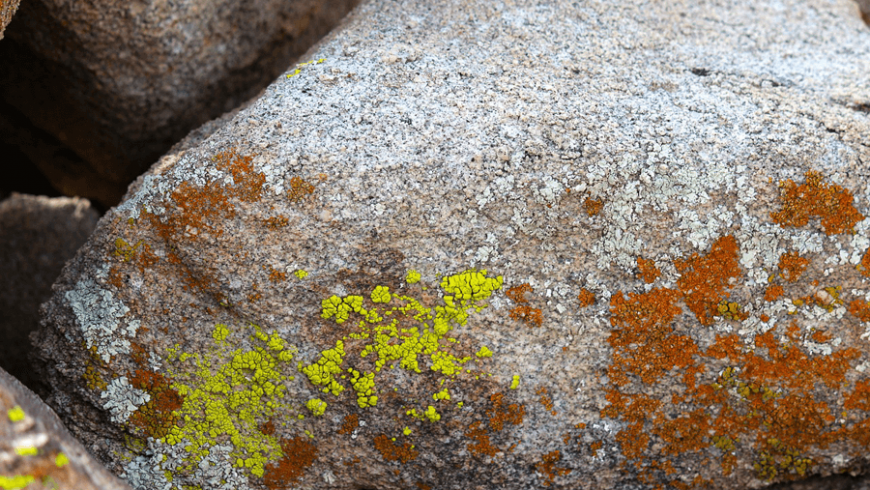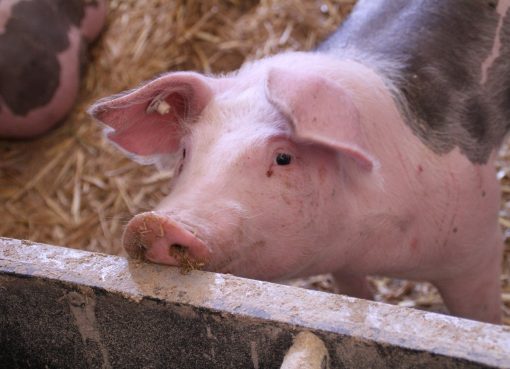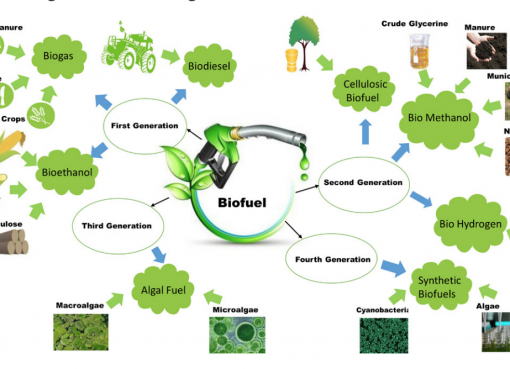Lichens are important agents in the biogeochemical and biogeophysical weathering of minerals and rocks, and in certain situation they play an important role in plant succession. Lichen is a symbiotic association between fungi (mycobiont) and photobiont. The external morphology is determined by mycobiont and provides shelter to the photobiont which in turn provides the nutritional requirement to mycobiont. The mycobiont generally belongs to Ascomycetes and Basidiomycetes and rarely Deuteromycetes, whereas photobiont comprises of a green alga or cyanobacterium or both. Theophrastus (370-285 B.C.), the father of Botany, coined the term ‘Lichen’ to denote the superficial growth of this organism on the bark of olive trees.
Lichens are of the following types based on the substratum – corticolous (on bark), ramicolous (on twig), lignicolous (on wood), folicolous (on leaves), terricolous (on soil), muscicolous (on moss) and saxicolous (on rocks). Besides these, there are other intermediate growth forms such as leprose (powder loke), squamulose (scale like), placodioid (centrally crustose but foliose at periphery) and dimorphic forms. Based on their size, crustose, leprose and other smaller squamulose growth forms are grouped as micro-lichens while foliose, fruticose and some larger squamulose forms are grouped as macro-lichens.
Lichen in a particular region or locality from any part of the world is significant, as lichens are ecologically the most important. Most lichens are highly intolerant of atmospheric pollution. Lichens can accumulate several environmental pollutants such as heavy metals and radionucleotides. Hence, they are utilizing as biomonitoring agents. Because of the presence of unique secondary metabolites lichen also plays an important role in medical science, perfumery, dye industry as well as food industries. Soup and salads are prepared from lichen thallus where the food value lies in lichen starch ‘lichenan’. Lichens are used for brewing of bear and alcohol production because of presence of certain polysaccharides. Insects, caterpillars, snails, squirrels and deers consume lichens. Orchil dyes and cudbear dyes are used for colouring of fabrics and to make fibres insect proof. Lichen dyes are used in preparation of litmus paper. Extracts of lichen along with other substrate are used for scenting perfumes and soaps that retain scent for a long period of time.
Lichenometry have great role in studying climate change by dating rock surface or other substratum on which lichen grows.
Destruction of habitats due to urbanization and increasing anthropogenic activities as well as presence of unique biological features, the study of lichen (Lichenology) is gaining importance in biology and biotechnology researches day by day.
Dr. Farishta Yasmin Associate Professor Department of Botany Nowgong College, Nagaon, Assam




